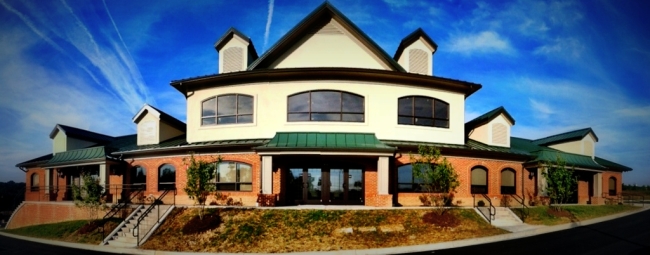You have /5 articles left.
Sign up for a free account or log in.

Mount Airy College Center
mtairycollegecenter.com
In the quest for more collaboration and partnerships between colleges, not every idea works out.
This is the case for the Maryland-based Mount Airy College Center for Health Care Education, which officials announced will cease operating at the end of the spring semester.
Carroll, Frederick and Howard Community Colleges worked together to open the center in 2012. The three Maryland community colleges plan to continue offering the health care classes that were prominent at the center -- and to maintain their consortium -- on their respective campuses.
"Relocating the programs to our individual campuses will reduce overall operating costs long-term," said Sylvia Blair, director of communications and media relations for Carroll, adding that the partnership and the center were both unique for the community colleges.
Collaborations between colleges aren't new, but consortia are difficult to form and partnerships for an academic center are relatively rare. However, these collaborations can serve students in new ways that are cost-effective for both students and colleges.
The Mount Airy center cost $4.3 million to renovate, of which $3 million came from the three colleges and another $1.3 million from federal grants. The consortium leased the space.
"Each college was spending $200,000 to $250,000 on the center's operations, so we anticipate there will be a savings," said Elizabeth Homan, executive director of public relations and marketing for Howard Community College. "Understandably, we'll be moving the programs back to their campuses, so we know there will be a cost savings."
The center operated as a centrally located hub for health programs that only one of each of the colleges provided. For example, a student who attended Howard could participate in Frederick's respiratory care program at the center. With the center closing, that Howard student may have to travel farther to continue the respiratory care class on Frederick's campus, but the student will continue to have the benefit of paying an in-county tuition rate for Frederick.
Since the center first opened four years ago, about 2,000 students have passed through its doors, Blair said.
But, ultimately, changes in enrollment doomed the center.
Like at most community colleges, student demand for the center increased at the height of the recession. But as the economy recovers, those enrollments have leveled off, Homan said.
In 2014, for example, the center had 1,554 duplicated enrollments (meaning total course enrollments, which can count students multiple times) in 133 credit and noncredit courses, but that figure decreased in 2015 to 1,392 duplicated enrollments in 131 courses, Homan said, adding that the three colleges are projecting enrollments will be lower this year in comparison to last year.
"The three partner community colleges invested in the students who attended the Mount Airy College Center for Health Care Education," said Homan, in an email. "After the spring semester, the programs will continue and students will continue to be served at our home campuses. Returning to our home campuses is a fiscally prudent decision in the long term."
Fred Baus is former chief executive officer of the University Center of Greenville and an expert on institutional collaboration. He said it's rare to find physical centers take shape as part of a collaboration of colleges. The Greenville university center is composed of six universities -- the University of South Carolina, the University of South Carolina Upstate, Anderson University, Clemson University, Furman University and South Carolina State University.
Baus said jointly run physical centers typically exist when those colleges are dealing with instruments or labs that are too expensive for them to handle on their own.
"But part of what drives these cooperations are population trends," Baus said. "Then there are population shifts, and that changes the formula."
Claire Ramsbottom, the executive director of the Association for Collaborative Leadership, said most college consortia aren't tied to offering specific academic programs or an academic center. Her association develops leadership skills and advances institutional collaboration. However, ACL isn't involved with community colleges.
Getting colleges to collaborate isn't always easy. But Ramsbottom points to her own group, Colleges of the Fenway, as an example. The six public and private colleges in the Boston area share resources collectively across a number of locations, she said. "It's very different from a consortium like this that combines resources to offer academic programs."








